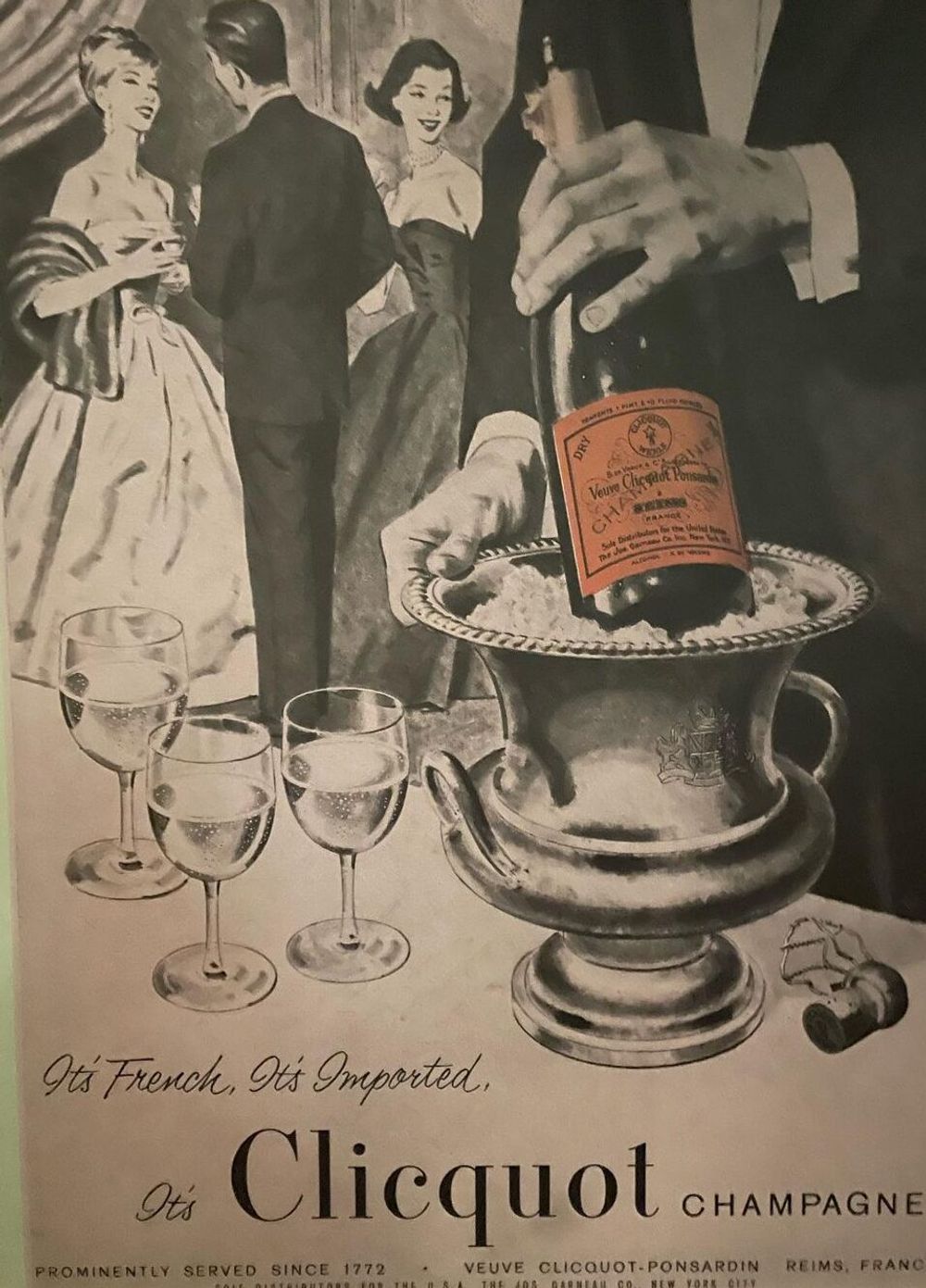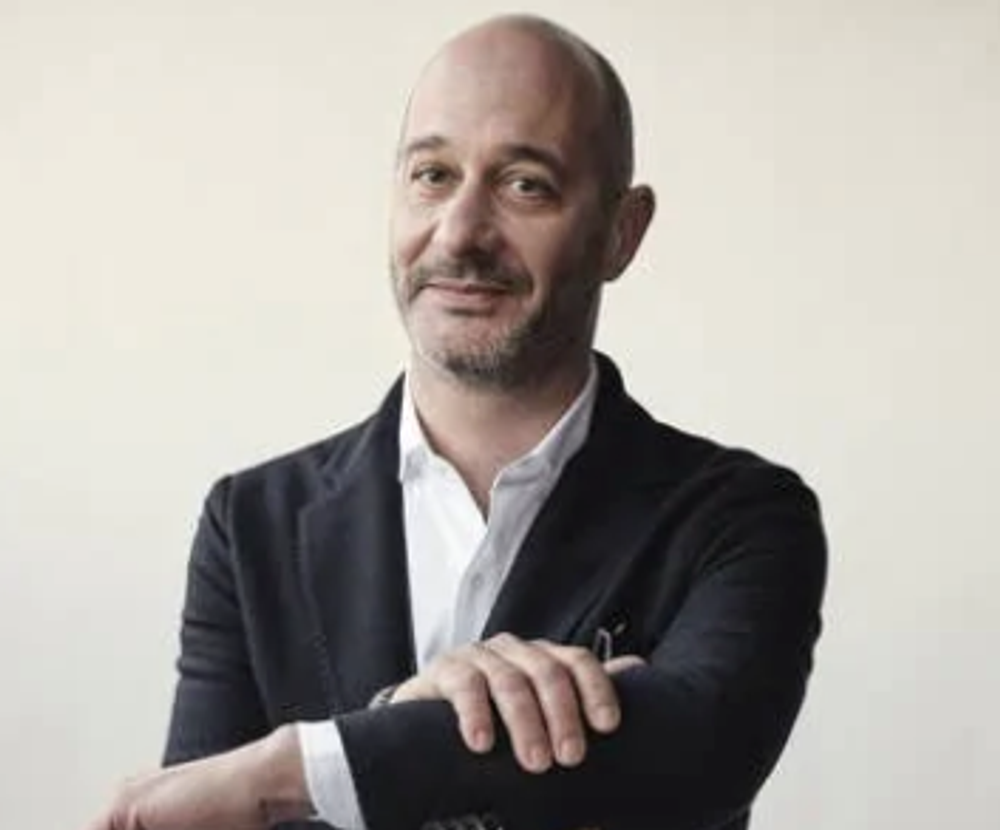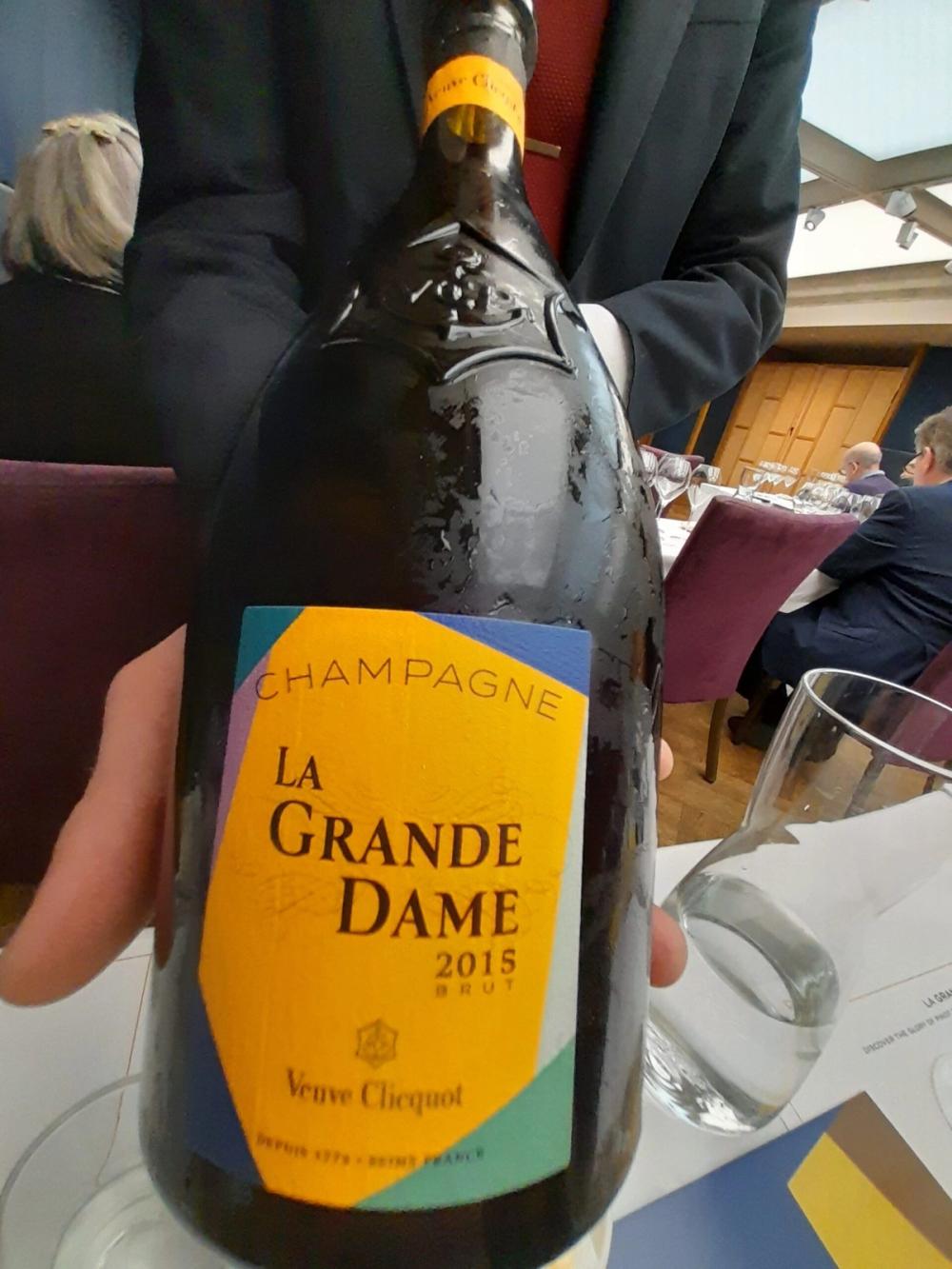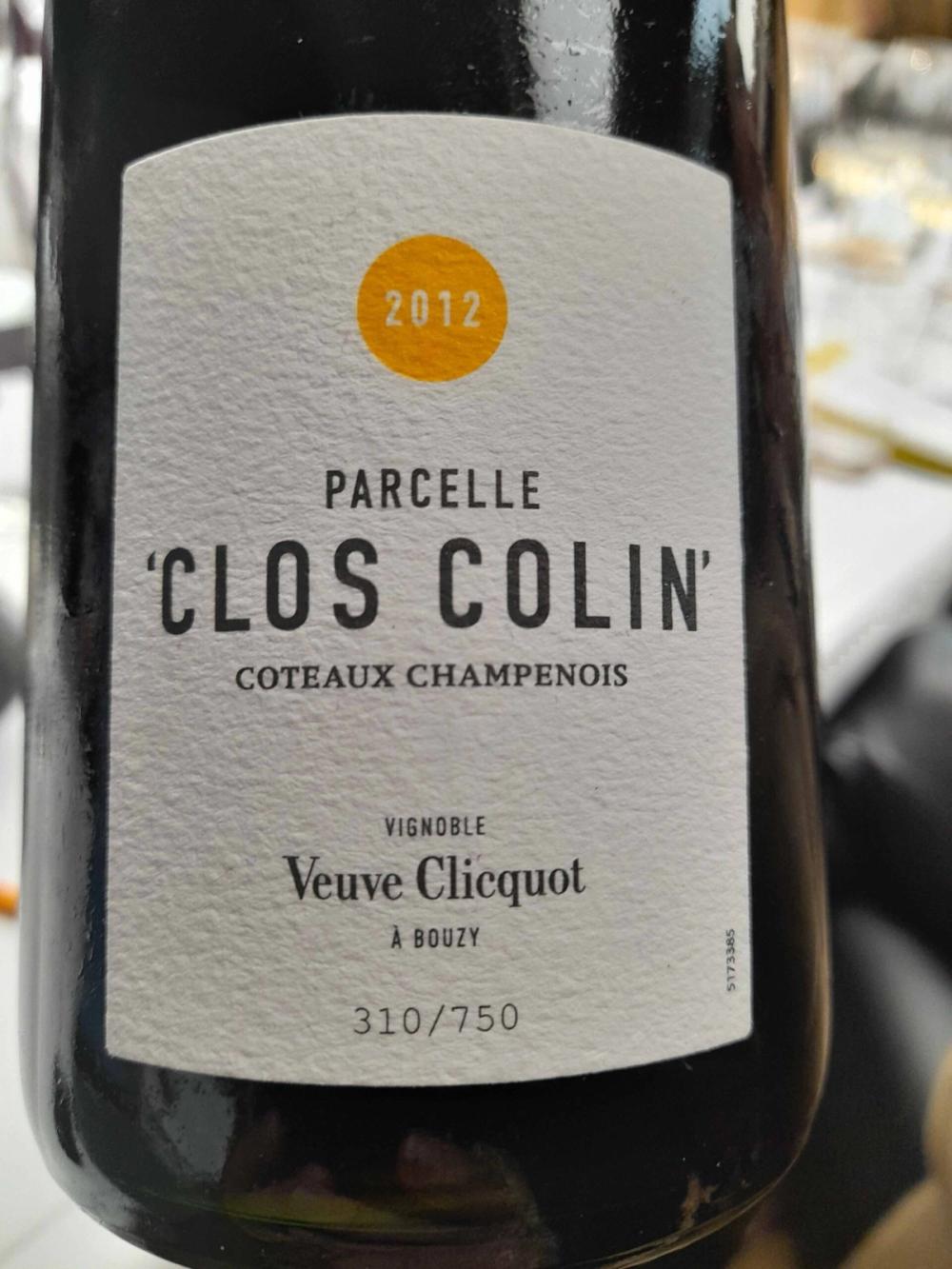“There is generosity and freshness and a mouth-watering finish. The bitterness Mariotti spoke of is very subtle and only appears as a most appetising feature on the finish,” writes Krebiehl about La Grande Dame 2015

Veuve Clicquot “prominently served” for the past 250 years
Hello again climate change. Two things are increasingly common: first that Champenois cellar masters talk bitterness as much as freshness in their Champagnes, second that more and more Houses explore the category of still red wines. Didier Mariotti, cellar master at Veuve Clicquot, did both at the London launch of Veuve Clicquot La Grande Dame 2015.
A new vision
Two different glass shapes were lined up for the launch of Veuve Clicquot Grande Dame 2015: a large, rounded tulip-shaped Champagne glass and a Burgundy glass. Generous samples were poured as Didier Mariotti provided some background on the wine. He reminded us that it had been his predecessor, Dominique Demarville, who left the house in 2019, who decided to shift the varietal balance of the house’s flagship prestige cuvée La Grande Dame to a much higher proportion of Pinot Noir – from around 60% to 90%. “This really started a new vision of La Grande Dame,” he said.

Didier Mariotti
Shifting sources, bitterness, structure and texture
“La Grande Dame for me is based on something very pure with a lot of energy. We are looking for something sharp and precise. The wine has to be elegant,” Mariotti noted. “By moving to 90% Pinot Noir, we also changed the grape supply, the villages we are now using are not the same as in the past,” he said.
“We are using much more Pinot Noir from further north like Verzy and Verzenay where we get less maturity than in Bouzy, or Aÿ; we get a lot more energy. And we also get bitterness, that bitterness is very good to help a long finish. For me, bitterness is very important. Bitterness is the last feeling you taste in the wine.”
Mariotti summed this up by emphasising that for him there were two words to describe La Grande Dame 2015: “Structure and texture. Structure for me represents the backbone of the wine, it gives the energy, something very precise; whereas the texture is a lot more about generosity and fruit and body of the wine. By using the two different glasses, you are able to see the difference.”
Indeed, the rounded Burgundy glass accentuated more of the fruit and creaminess whereas the tulip displayed more of the structure.
The 2015 vintage
“2015 was an easy vintage,” Mariotti said. “No frost, no disease in the vineyard, perhaps a lack of water. Harvest was from the 10-15th of September, after a very sunny and dry summer. In a way, it was a generous vintage, not as sharp as ‘12,” producing concentrated wines. The freshness of the wine is all the more remarkable for that. The wine is made from 90% Pinot Noir and 10% Chardonnay and was disgorged with a dosage of 6g/l. It is the 24th vintage released of this wine since the inaugural 1969 vintage which was released in 1972.

La Grande Dame 2015, London launch, May 2, 2023
Tasting Veuve Clicquot La Grande Dame 2015
The nose opens with smoky reduction and subtle creaminess; with more air, ripe lemon and hints of rye bread appear. The palate comes in with real freshness and fine, creamy mousse that intensifies that slightly flinty, reductive smokiness. The tiny bubbles burst against a textural backdrop and flavour of freshly baked, slightly peppery rye crumb, gently salty, that speaks of Pinot Noir structure. There is generosity and freshness and a mouth-watering finish. The bitterness Mariotti spoke of is very subtle and only appears as a most appetising feature on the finish, as the wine warms up. Elegant and fresh.
Rosé: tasting with the eyes
La Grande Dame 2012 was presented next for comparison, as was the 2012 La Grande Dame Rosé – which gave Mariotti the opportunity to speak about red and rosé winemaking at the house. He noted that Madame Barbe-Nicole Clicquot Ponsardin had been the first to blend red and white wines to make a rosé Champagne – previous to that all pink Champagne had been made by maceration – which at the time did not guarantee colour stability.
“She always used to say ‘I always taste my rosé first with my eyes’,” he noted. She thus went to Burgundy to investigate red winemaking and developed this new formula of colouring her white Champagnes pink by adding red wine.

Parcelle Clos Colin
Today, much the same is happening. Veuve Clicquot have a winery dedicated just to red wine in the village of Bouzy and has perfected the process to get exactly what is needed from a red wine that is supposed to tinge white wines pink: lots of fruit flavour and a deep colour. Certain parcels are dedicated to red wine and one in particular, Clos Colin in Bouzy, is used to achieve the pink colour of La Grande Dame Rosé. The 1-hectare parcel is one of the oldest of the estate, bought in 1741 by Philippe Clicquot – long before the reign of Madame Clicquot who took the reins at the house in 1805. Today the vines are an average of 40 years old.
“We always bottle some of the red to see how the wine is evolving,” said Mariotti. “We always keep part of it in the cellar.”
Exceptionally, this red wine is now being made available – in a tiny quantity of 750 bottles – so Champagne lovers can taste this wine alongside La Grande Dame Rosé. It is only available as a “2012 Kit of La Grande Dame Rosé & Parcelle Clos Colin,” as the promotional literature states.

“Not a Coteaux”
Mariotti emphasised that Clos Colin for him was “not a Coteaux [Champenois]. It is a red wine dedicated to rosé – which is very different.” While Parcelle Clos Colin is invariably labelled as such, since Coteaux Champenois is the correct appellation for non-sparkling wines from Champagne, Mariotti distinguished here between a wine made for colouring purposes vis-à-vis a still red wine made to be drunk as such. Clos Colin, for instance, is not aged in oak and is indeed a fruity pleasure. Mariotti, however, also said that Veuve Clicquot’s red winemakers had also been sent to Burgundy to learn – so we can surmise that a still red Coteaux Champenois is in the works at Veuve Clicquot.
“Now we are also working on how to make Coteaux properly, which is interesting,” he said.
Parcelle Clos Colin 2012
The nose is immediately super-fruited, both berry- and cherry-tastic, followed by a fine and promising flicker of reduction. Some maple syrup spice appears, too. The palate comes with crunchy acidity and lovely concentration. This brims with fruit and is rather intense in colour. Rather smashable and ideal to be chilled in summer. A fruity pleasure drinking with great ease.
































